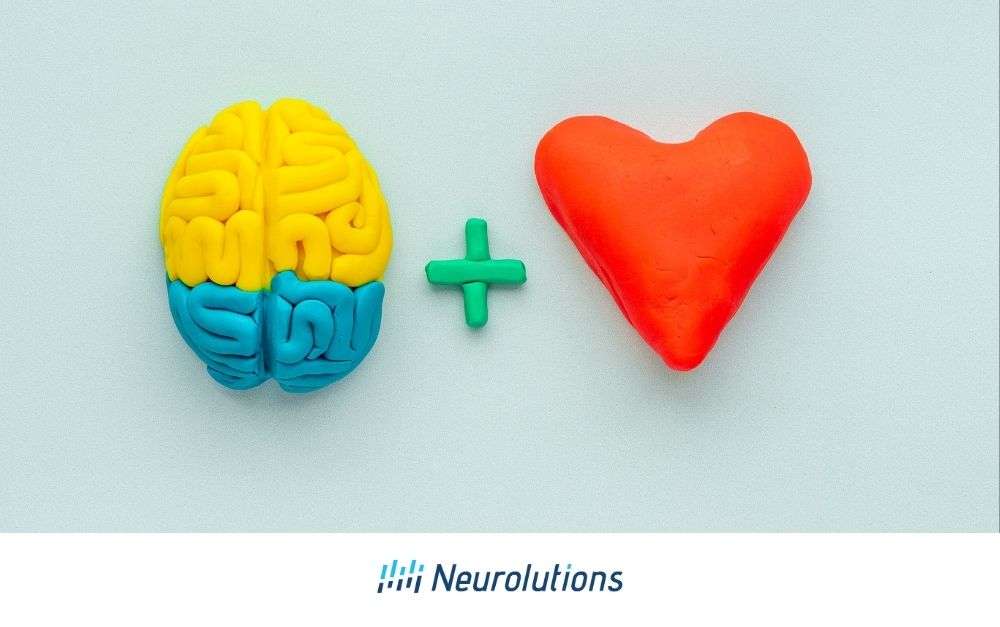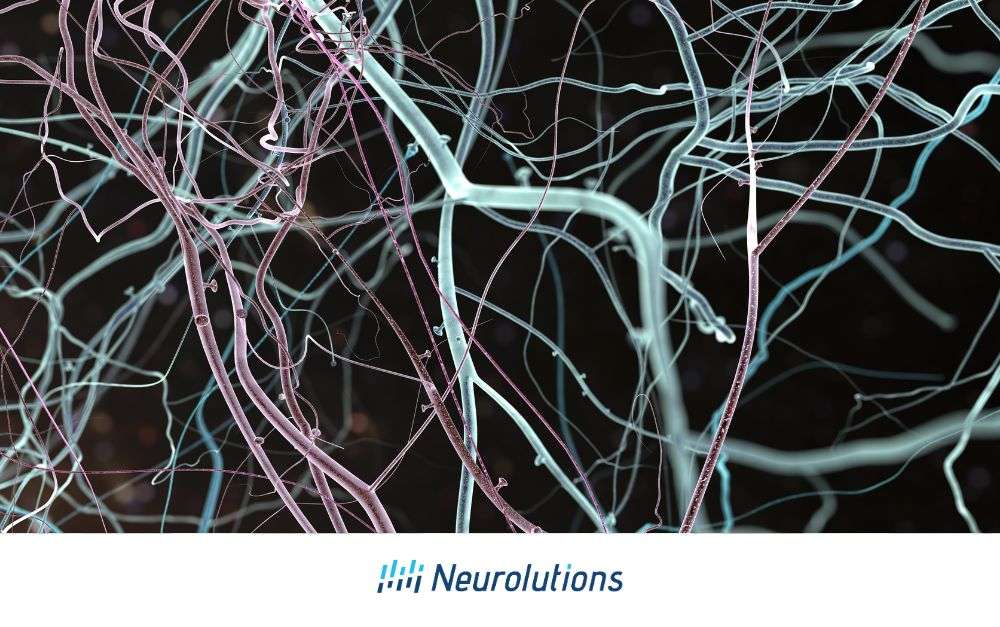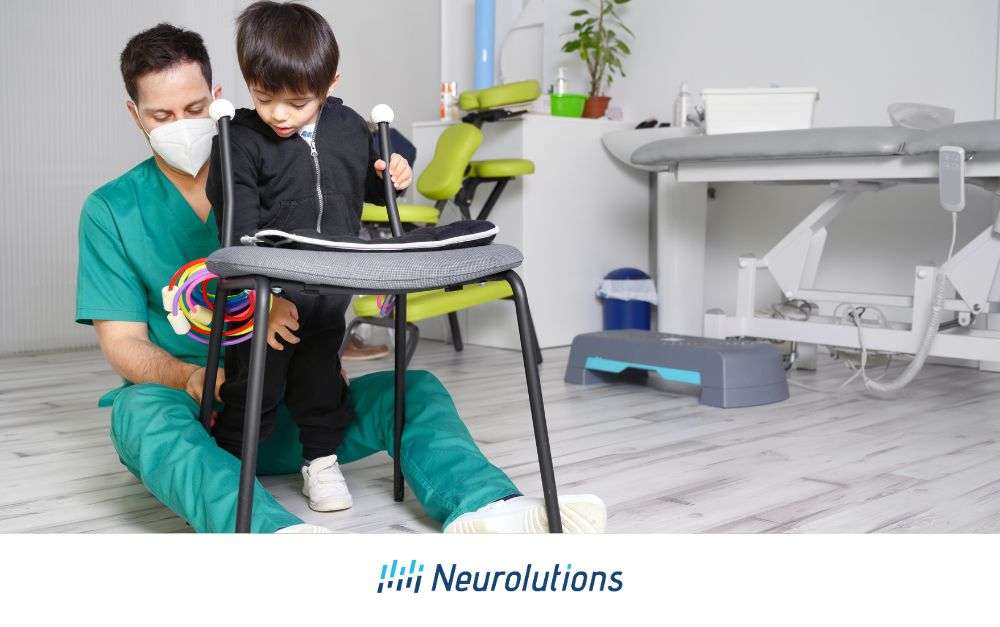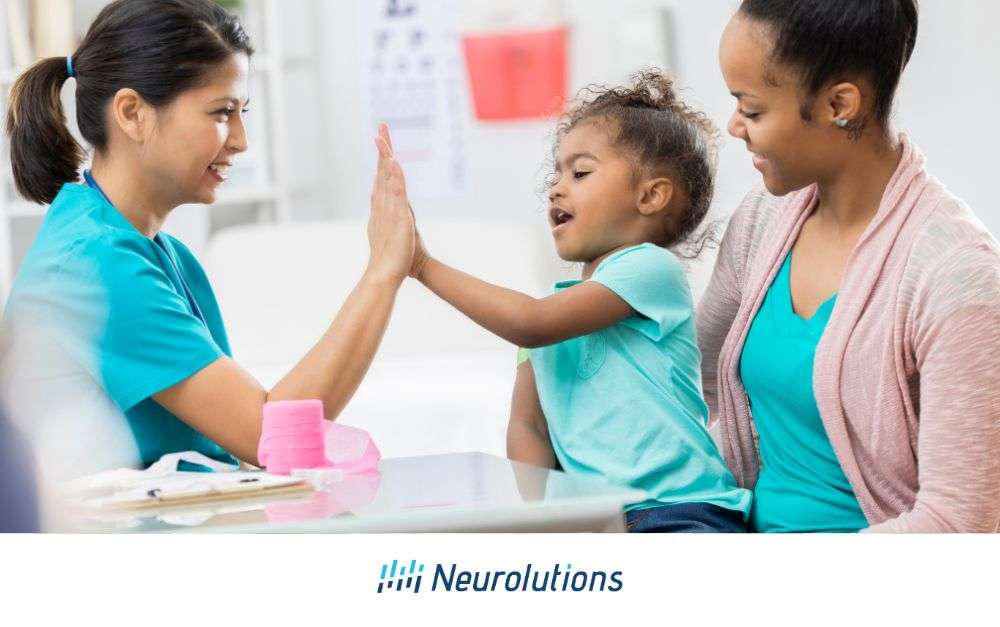While it is obvious that the brain and heart are critical to human functioning, one might not realize how much these two organs impact each other. Broadly speaking, the brain controls the body’s nervous system, therefore controlling the heart. However, the relationship between these two organs goes beyond mere control. The connection between the brain and the heart is profound and multifaceted.
Heart disease likelihood increases with age. Some lifestyle factors, such as an unhealthy daily diet, can increase the risk of poor “heart health”. Around 40% of adults in the US aged 40-59 have heart disease, with an increase to 75% in adults aged 69-79 years, and 86% after age 79 (1). Additionally, chronic fatigue and dementia symptoms are more common in senior-aged adults.
This increased incidence of heart and brain disorder levels in older-aged adults is primarily credited to the brain-heart connection.
The following article describes the following: how the brain and heart impact each other, key brain regions that affect “heart health”, how specific heart and brain disorders can impact both of these organs, and how a stroke can negatively impact both “brain health” and “heart health”. Additionally described is why a holistic brain-heart medical management approach is important, and recent research findings that advance our knowledge regarding the brain-heart connection.
The Autonomic Nervous System and the Heart
The autonomic (involuntary) nervous system (ANS) is directly controlled by the brain and comprises two components: the sympathetic and parasympathetic nervous system. The predominant bodily functions closely associated with the ANS include the heartbeat, blood pressure, and the pituitary gland-directed release of hormones from the body’s system of endocrine glands (2). Therefore, a malfunction of the autonomic nervous system can lead to the development of high blood pressure, resulting in further complications such as cardiovascular disease (CAD), the primary cause of heart disease.
Role of the Sympathetic Nervous System (SNS):
The SNS is one of the two parts comprising the autonomic nervous system. The SNS controls the body’s instinctual response to a threat. This is more commonly referred to as the “fight or flight” response and it can be activated by a real or perceived threat to our physical health. The fight or flight response involves the increased release of certain hormones into the bloodstream such as adrenaline and epinephrine. It can also increase blood pressure, breathing rate, and the release of specific chemicals in the brain that increase alertness and lessen any feelings of sleepiness.
Some of the many areas of the body controlled by the SNS in its fight or flight response role are (3):
- Eyes: enlarges the pupils
- Heart: increases heart rate in order to improve oxygen delivery to all other organs
- Digestive tract: slows down digestion so that energy is directed to other areas of the body
- Liver: activates stored energy in the liver for rapid use by other organs
Role of the Parasympathetic Nervous System (PNS):
In contrast to the SNS, the PNS controls the body’s ability to relax after the fight or flight response has occurred. It contrasts with the function of the SNS by allowing the body’s functioning to return to normal. The SNS and PNS are essentially opposing systems, and both are needed by our bodies to function properly.
Key Brain Regions Involved in Heart Regulation
Several areas of the brain impact heart functioning. One key area is the thalamus, located in the middle of the brain above the brainstem. It acts as a critical hub region, or “relay station,” to direct diverse information such as pain or cold to other areas of the brain. It is essential in integrating diverse information being processed throughout the cerebral cortex (4).
The hypothalamus is located below the thalamus and just above the pituitary gland. The hypothalamus controls the ANS and pituitary system as well as the release of various hormones. For the hypothalamus-pituitary-hormone “loop” to maintain the proper balance of hormones in the body, each element needs to function correctly (5).
When a stroke or Traumatic Brain Injury (TBI) damages the thalamus or hypothalamus, both brain and heart functioning are negatively impacted. This results in a heightened risk of death (6). For example, high blood pressure is a common consequence of injury to the hypothalamus, and it is strongly-linked to an increased risk of heart attack or sudden heart failure.
How Injury to the Cerebrum can Result in Both Brain and Heart Impacts:
The cerebrum is the largest part of the brain. It enables movement and is tied to speech and cognitive functioning such as memory and problem-solving (7). Most strokes are caused by an arterial blood clot in the brain that injures at least one site in the cerebrum. Its outer layer is called the cerebral cortex; damage to it can negatively impact mood as well as the above-described functional arenas.
Notably, chronic anxiety and depression are commonly observed in cerebral injury due to stroke and TBI (8). These two neuropsychiatric disorders are also linked to increased risk of heart disorders, primarily due to changes in the levels of specific hormones in the bloodstream and/or levels of brain chemicals that result from persistent anxiety and depression. Moreover, a stroke or TBI affecting one brain location can have a secondary adverse impact on the hypothalamus, which controls diverse bodily processes impacting overall heart health (9).
Neurotransmitters and Heart Function
Neurotransmitters are chemicals released in the brain that enable nerves to carry “messages” to each other throughout the brain and the entire nervous system. These neurotransmitters include (10):
- Acetylcholine
- Glutamate
- Dopamine
- Norepinephrine
- Serotonin
Strokes, TBIs, brain tumors, brain infections, and other brain-damaging events can interfere with the release of the neurotransmitters. Specific amounts of neurotransmitter release are needed to maintain health and proper body functioning, and adverse outcomes may arise when an excess (or deficiency) of neurotransmitters is released.
Acetylcholine is the primary neurotransmitter associated with the PNS. After our body’s flight or fight response occurs, acetylcholine enables the heart rate and blood pressure to slow back to normal. Failure to return to normal can lead to the chronic development of hypertension and an excessively rapid heart rate, ultimately causing damage to the heart.
Dopamine enables us to feel pleasure, while serotonin is involved in regulating mood inclusive of both optimism and chronic anxiety. In particular, a low level of dopamine is associated with depression, chronic fatigue, and loss of motivation. The result for a stroke or TBI survivor with a chronically-lowered dopamine level can be reduced interest in participating in rehabilitation therapy, adversely impacting overall health .
The Impact of Heart Disease on the Brain
Heart disease can negatively impact brain health with the diminishing of blood flow to the brain. The heart pumps the blood through the circulatory system (inclusive of arteries, veins and capillaries), and a “weak” heart might be unable to pump enough blood to the brain to prevent brain cell and nerve cell damage.
Atherosclerosis, a disorder in which sticky plaques form on the artery walls, is recognized as a major cause of strokes (11). This is because arterial plaques can travel to the brain and form clots, causing damage by preventing arterial blood from reaching (oxygenating) the brain. And, as discussed, damage to the brain can then lead to the development of heart disease.
Neurocardiology in the Field of Medicine:
Neurocardiology is the medical field focused on the interrelationship of neurological conditions with cardiovascular and cardiology disorders. Neurocardiology is still considered an emerging field, and it involves the collaboration of (12):
- Cardiologists
- Neurologists
- Stroke care physicians
As a new medical practice and research field, neurocardiology encompasses the following three categories (13):
- The effect of the heart on the brain
- The effect of the brain on the heart
- Neurocardiac syndromes (such as post-stroke heartbeat irregularities)
Monitoring and Managing Brain-Heart Health
Stroke and TBI survivors need to be aware of their increased risk for heart disease. This heightens the need for embracing a healthy lifestyle, including:
- Eating a healthy daily diet that is low in saturated fats
- Getting enough daily sleep each night
- Engaging in regular daily exercise
- Performing a daily mindfulness practice such as meditation to lower overall anxiety level
A smoking cessation “plan of action” is extremely important for a stroke or TBI survivor as well, as smoking is strongly linked to an increased risk for both stroke and heart disease (14).
Advances in Brain-Heart Research
An increasing number of medical research studies over the past decade have been focused on the brain-heart connection.
For example, stress cardiomyopathy, an acute heart failure syndrome triggered by intense physiological or psychological stress, was found to promote the over-release of the hormone neurotransmitter catecholamine through the activation of the SNS (15). Recent research has also shown that heart arrhythmias can be triggered by physiological and/or emotional stress, and can cause sudden death in people with otherwise structurally-normal hearts (16).
These types of medical research findings are useful not only to advance knowledge regarding the brain-heart connection, but also for pharmaceutical researchers developing medications to regulate the balance of hormones and other substance levels needed for optimal health.
Integrating Brain and Heart Health for Holistic Well-Being
Heart and brain functioning are tightly connected, and damage to one often negatively impacts the other. For this reason, stroke and TBI survivors need to be monitored on a regular basis by healthcare providers for both adverse brain and heart impacts.
Stroke and TBI survivors are at heightened risk for premature dementia (18) and need to receive an individualized treatment approach that addresses physical and cognitive impairments and includes ongoing mental health services. Medication to decrease chronic anxiety and/or depression levels can be important not just for mental health, but also because these conditions can negatively impact heart functioning.
How to Maintain both “Brain Health” and “Heart Health”:
Regardless of whether a person has experienced a brain injury or not, the following are five ways to can maintain or promote both brain health and heart health:
- Eat a healthy daily diet that is low in saturated fats, and avoid consuming all trans fats
- Get enough daily sleep each night, plus go to bed/wake up at the same time each day
- Engage in a daily exercise program that includes both aerobic and muscle strengthening exercises
- Prevent advancing to Type-2 diabetes, or manage Type-2 diabetes if already diagnosed with it. This endocrine disorder heightens the risk for both stroke and heart disease
- Maintain body weight within normal range, or participate in a weight loss program if clinically obese
The neuroplasticity of the brain, which is its ability to heal itself through development of new brain nerve networks, is dependent upon both a healthy brain and heart. For stroke and TBI survivors, the brain’s neuroplasticity is engaged when participating in stroke or TBI rehab activities, such as physical and/or occupational therapy. It is boosted further when the heart is functioning well. Focusing on“heart health” as well as “brain health” is the key to maximizing the potential for recovery from stroke or TBI.
References:
- Rodgers JL, Jones J, Bolleddu SI, et al. (2019). Cardiovascular Risks Associated with Gender and Aging. Journal of Cardiovascular Development and Disease 6(2): 19. Webpage: https://www.ncbi.nlm.nih.gov/pmc/articles/PMC6616540/
- Thau L, Reddy V, and Singh P. (Updated 2022). Anatomy, Central Nervous System. In: StatPearls [Internet]. StatPearls Publishing: Treasure Island, FL. Webpage: https://www.ncbi.nlm.nih.gov/books/NBK542179/
- Cleveland Clinic [Cleveland, OH]. Sympathetic Nervous System (SNS). Webpage: https://my.clevelandclinic.org/health/body/23262-sympathetic-nervous-system-sns-fight-or-flight
- Hwang K, Bertolero MA, Liu WB, et al. (2017). The Human Thalamus Is an Integrative Hub for Functional Brain Networks. The Journal of Neuroscience 37(23): 5594-5607. Webpage: https://www.ncbi.nlm.nih.gov/pmc/articles/PMC5469300/
- Churilov AN, Milton JG. (2022). Modeling pulsativity in the hypothalamic–pituitary–adrenal hormonal axis. Scientific Reports12: 8480. Webpage: https://www.nature.com/articles/s41598-022-12513-w
- Bao J, Pan Z, and Wei S. (2021). Iatrogenic Hypothalamus Injury After Resection of Subependymoma Within the Left Brain Ventricle. Cureus 13(1): e13044. Webpage: https://www.ncbi.nlm.nih.gov/pmc/articles/PMC7854324/
- Johns Hopkins Medicine [Baltimore, MD]. Brain Anatomy and How the Brain Works. Webpage: https://www.hopkinsmedicine.org/health/conditions-and-diseases/anatomy-of-the-brain
- Conroy SK, Brownlowe KB, and McAllister TW. (2020). Depression Comorbid With Stroke, Traumatic Brain Injury, Parkinson’s Disease, and Multiple Sclerosis: Diagnosis and Treatment. Focus (American Psychiatric Association Publishing) 18(2): 150-161. Webpage: https://www.ncbi.nlm.nih.gov/pmc/articles/PMC7587873/
- Mele C, Pingue V, Caputo M, et al. (2021). Neuroinflammation and Hypothalamo-Pituitary Dysfunction: Focus of Traumatic Brain Injury. International Journal of Molecular Sciences 22(5): 2686. Webpage: https://www.ncbi.nlm.nih.gov/pmc/articles/PMC7961958/
- Sheffler ZM, Reddy V, and Pillarisetty LS. (Updated 2023). Physiology, Neurotransmitters. In: StatPearls [Internet]. StatPearls Publishing: Treasure Island, FL. Webpage: https://www.ncbi.nlm.nih.gov/books/NBK539894/
- National Heart, Lung, and Blood Institute (NHLBI). Stroke: Causes and Risk Factors. Webpage: https://www.nhlbi.nih.gov/health/stroke/causes
- Sposato LA, and Gurol ME. (2021). Advances in Neurocardiology: Focus on Atrial Fibrillation. Stroke 52:3696-3699. Webpage: https://www.ahajournals.org/doi/10.1161/STROKEAHA.121.033970
- Ripoll JG, Blackshear JL, and Diaz-Gomez JL. (2018). Acute Cardiac Complications in Critical Brain Disease. Neurosurgery Clinics of North America 29(2): 287-297. Webpage: https://www.sciencedirect.com/science/article/abs/pii/S1042368017301511
- Centers for Disease Control (CDC). Smoking and Cardiovascular Disease. Webpage: https://www.cdc.gov/tobacco/sgr/50th-anniversary/pdfs/fs_smoking_cvd_508.pdf
- Wang X, Pei J, and Hu X. (2020). The Brain-Heart Connection in Takotsubo Syndrome: The Central Nervous System, Sympathetic Nervous System, and Catecholamine Overload. Cardiology Research and Practice 2020: 4150291. Webpage: https://pubmed.ncbi.nlm.nih.gov/32211202/
- Winbo A, and Paterson DJ. (2020). The Brain-Heart Connection in Sympathetically Triggered Inherited Arrhythmia Syndromes. Heart, Lung and Circulation 29(4): 529-537. Webpage: https://pubmed.ncbi.nlm.nih.gov/31959550/
- Shively S, Scher AI, Perl DP, et al. (2012). Dementia resulting from traumatic brain injury: What is the pathology? Archives of Neurology 69(10):1245-1251. Webpage: https://www.ncbi.nlm.nih.gov/pmc/articles/PMC3716376/#:~:text=One%20of%20the%20most%20feared,2%2Dand%204%2Dfold.




